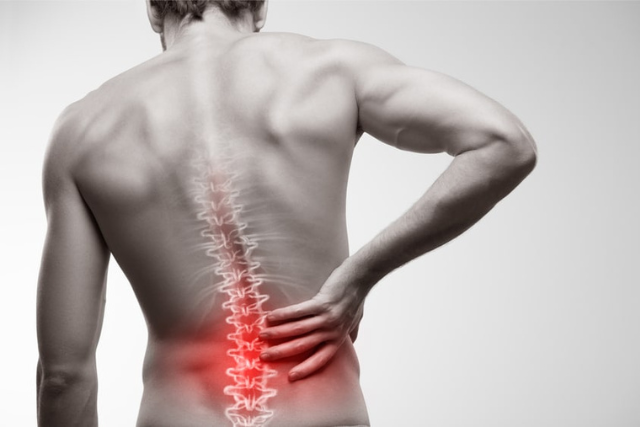
Spondylosis vs Spondylolysis vs Spondylolisthesis: What’s the Difference?
As we age, our bodies undergo various changes, and the spine is no exception. Conditions like spondylosis, spondylolysis, and spondylolisthesis are commonly heard medical terms related to the spine. While they sound similar, they each have specific characteristics and modes of treatment. Knowing what they mean is just the first step to finding healing – it’s important to get a correct diagnosis from the start so you can work with a spinal expert to create a customized treatment plan for your condition.
What is Spondylosis?
Spondylosis, also known as spinal osteoarthritis, is a degenerative condition that affects the spine.
Causes & Risk Factors of Spondylosis
Spondylosis is typically associated with age and results from the wear and tear of the spinal discs and facet joints over time. As we grow older, the discs between our vertebrae begin to lose water content, making them less flexible. This leads to the formation of bone spurs (osteophytes) along the edges of the vertebrae, which can cause pain and reduced mobility.
Symptoms of Spondylosis
Patients with Spondylosis often experience stiffness, localized pain, and reduced range of motion.
If left untreated, patients with Spondylosis can experience:
- Pain and Discomfort
- Limited Mobility
- Nerve Compression
- Muscle Weakness and Atrophy
- Spinal Instability
- Reduced Quality of Life
- Functional Impairment
- Neurological Complications
Treatments for Spondylosis
Treatment approaches can include physical therapy, pain management techniques, lifestyle modifications, and in some cases, surgical interventions. If patients fail initial non-operative approaches, your spinal specialist at the VSI will discuss the many different approaches for surgical intervention. The goal of surgical intervention is to stabilize the spine, alleviate pressure from the nerves, and correct any structural deformity. Every surgical plan is personalized to our patients depending on his or her symptoms or spinal needs.
What is Spondylolysis?
Spondylolysis is a stress fracture or weakness in the pars interarticularis bone found in the lower part of the spine. The pars interarticularis is the weakest part of the spine, especially in younger patients whose bones are still maturing.
Causes & Risk Factors of Spondylolysis
Spondylolysis is often caused by overuse of the lower back – usually as a result of repetitive or traumatic impact from repetitive hyperextension of the spine from a sport like gymnastics, football, or weightlifting. It is also commonly seen in those who have experienced a car accident, a fall, or degenerative/genetic changes to the bone.
Symptoms of Spondylolysis
Symptoms of Spondylolysis may include back pain, muscle spasms, stiffness in the lower back (especially during physical activities), and muscle tightness.
Symptoms can range from mild to severe depending on the severity of the fracture or instability in the spine. In some cases, you may have symptoms of radiculopathy. These include pain, numbness, weakness, or tingling in the legs. If the fracture is severe enough causing a slippage, referred to as isthmic spondylolisthesis, there may be varying degrees of central stenosis which can be severely pinching the nerves. If you experience loss of bowel or bladder control, urinary urgency, numbness or weakness in the legs, or numbness in the groin, contact your spinal expert immediately
What Happens if Spondylolysis is Left Untreated?
If left untreated, Spondylolysis can potentially lead to various complications and health issues, including – Chronic pain, Degenerative disc disease, or even progress to Spondylolisthesis, which may result in further instability and nerve compression.
Treatments for Spondylolysis
Treatment is often aimed first toward symptom management by way of non-surgical treatment – such as spine-specialized physical therapy, manual massage, anti-inflammatory medications, dry needling, low-impact exercise, and proper nutrition. We have also found great success in using regenerative medicine treatment options to treat these types of pars fractures.
In severe cases or if conservative methods fail, your spine specialist may recommend surgical options. The goal of surgery is to stabilize the spinal segment, most commonly through a spinal fusion procedure. This decreases the amount of motion of one vertebral segment on top of another to reduce pain, relieve pressure off of nerves, increase stability, and correct misalignment. Each surgical plan is determined after a thorough evaluation with your spinal specialist at the VSI and is specific to each patient.
What is Spondylolisthesis?
Spondylolisthesis is a medical diagnosis to describe the forward slippage of one vertebral body in relation to the vertebra below. It is closely related to spondylolysis and often occurs as a consequence of it.
When the pars interarticularis weakens or fractures in spondylolysis, it can cause the affected vertebra to slip forward over another, resulting in spondylolisthesis.
Causes & Risk Factors of Spondylolisthesis
The spine is made of several motion segments stacked on top of one another to allow for smooth movement in all directions. Each of these segments has three major points of contact including two facet joints and an intervertebral disc. If the facet joint and intervertebral discs degenerate or experience trauma this could lead to abnormal motion and misalignment.
Another common cause of spondylolisthesis is a stress fracture in the vertebra. This is often diagnosed and treated by the specialists at the VSI.
Symptoms of Spondylolisthesis
Symptoms may include pain, discomfort, stiffness, and muscle spasms in the lower back. Symptoms of radiculopathy may also appear. If the slippage is severe and causes detrimental pressure on the spinal nerves, you may develop symptoms of cauda equina syndrome. These include numbness in the groin area or down the legs, loss of bowel or bladder control, urinary urgency, or difficulty with balance or walking. Cauda equina is a spinal emergency and if you are experiencing these symptoms seek immediate evaluation.
If left untreated, Spondylolisthesis symptoms can lead to:
- Further degenerative changes
- Chronic pain and discomfort
- Nerve compression
- Loss of function
- Progressive deformity
- In rare or severe cases, bowel and bladder dysfunction. This can further lead to complications with daily activities and reduced quality of life.
Treatments for Spondylolisthesis
Treatment varies based on the severity of the symptoms and degree of slippage.
Conservative, non-operative treatment options which may include spine-specialized physical therapy, core strengthening, manual massage, dry needling, low-impact exercise, and maintaining an overall healthy lifestyle.
If patients fail non-operative treatment or are developing worsening neurologic symptoms surgery is often discussed. The goal of surgical intervention is to stabilize the spine, alleviate pressure from the nerves, and correct any structural deformity. There are many different approaches for surgical intervention which your spinal specialist at the Virginia Spine Institute will discuss with you in detail.
When Should You See a Spine Specialist for Spondylosis, Spondylolysis, or Spondylolisthesis?
Spondylosis, spondylolysis, and spondylolisthesis are distinct conditions affecting the spine, each with its unique causes and characteristics. While each of these conditions is different, they present and can be treated in similar ways.
Getting a thorough evaluation and correct diagnosis at your first appointment allows for early intervention, and is essential in managing these conditions effectively and improving your overall quality of life. If you experience persistent back pain or suspect any spinal issues, schedule a consultation with one of our VSI spine specialists. They will discuss both conservative and surgical treatment options during your initial consultation; all personalized to your specific symptoms and spinal needs.
Topics covered
About the Author
Featured Resources
Insights to Achieve a Pain-Free Life



